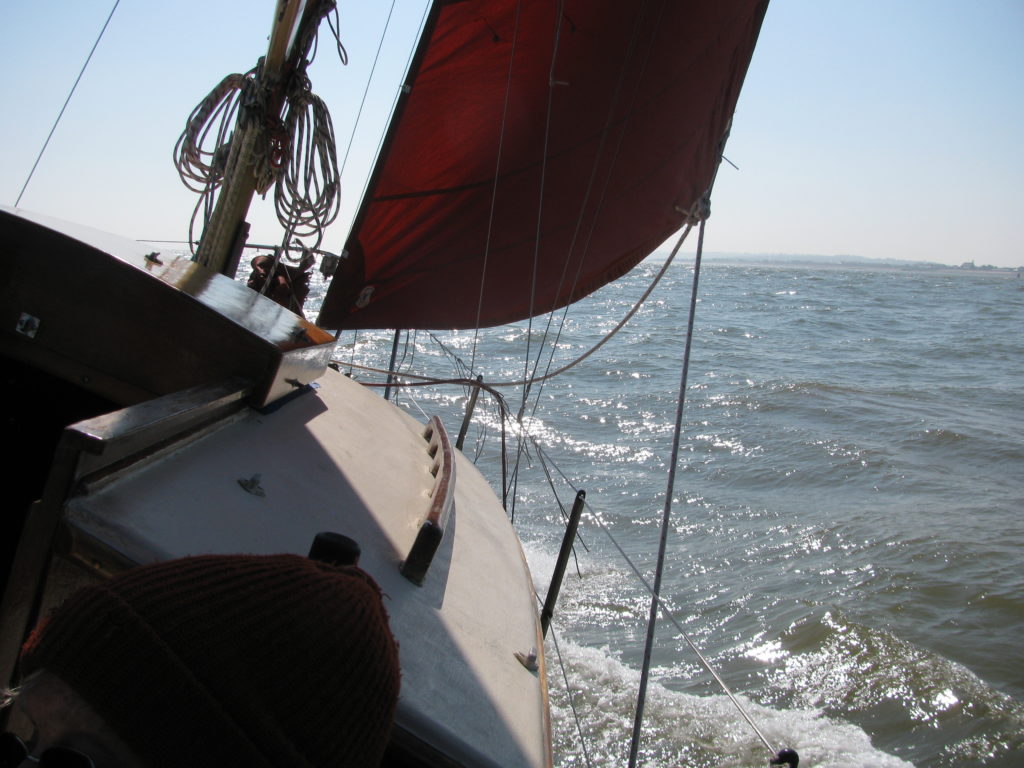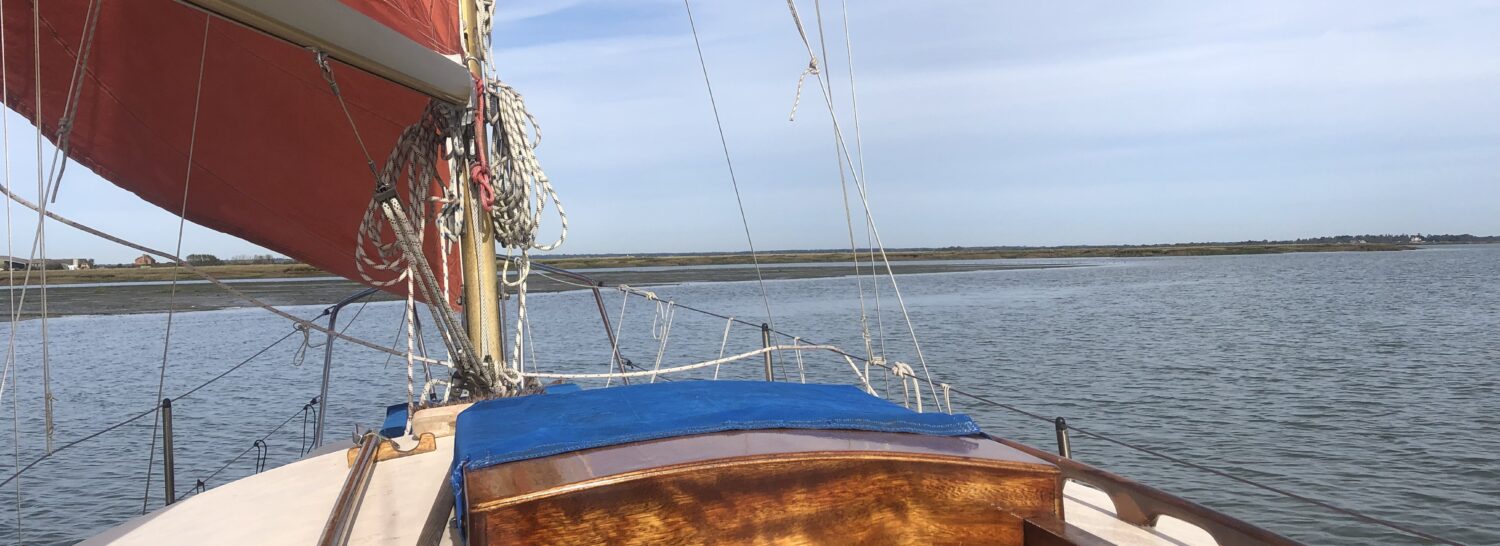During a recent week away pottering around the lower Medway and around the Swale we enjoyed a couple of days up Faversham Creek savouring the delights of the historic town sitting at the creek’s head.
We berthed at iron Wharf, having pre-booked our visit.
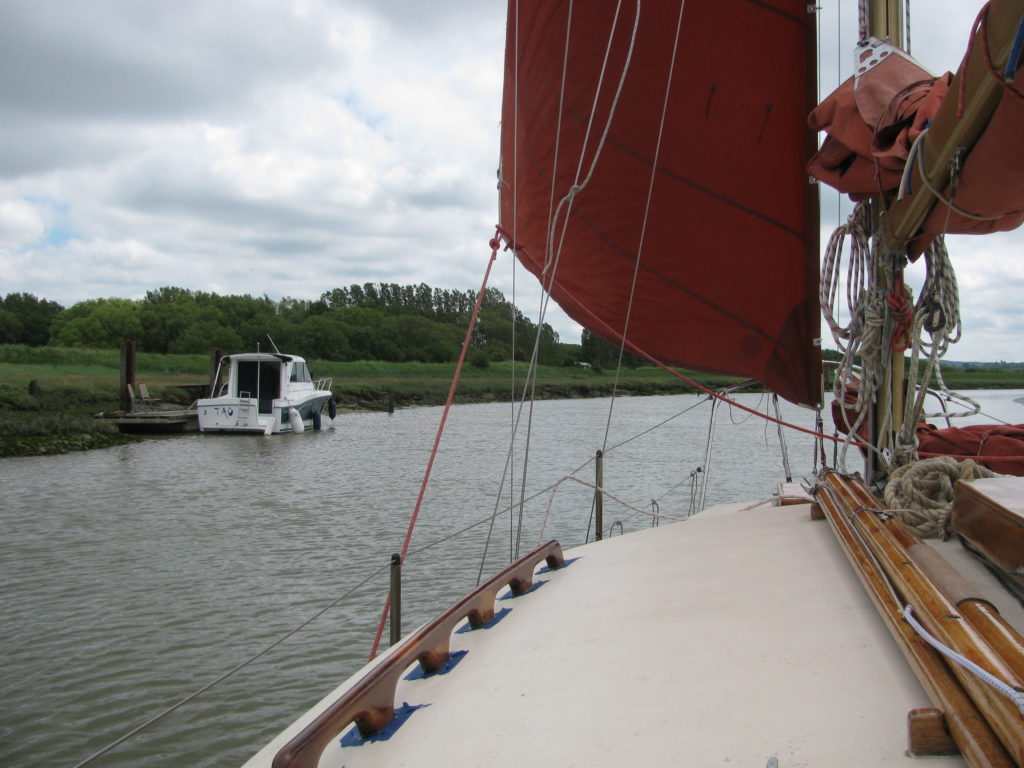
We were placed alongside the spritsail barge Ironsides upon which Toby (yard manager) and his partner live with their son – a very friendly family.
As is the norm when in Faversham, I was soon wandering the yard. The huge mainsail off the Ironsides was laid out being given a coat of tanning. Toby and his partner were being helped by Peter Dodds the owner of the Mirosa and yard partner.
I offered to help if not finished by time Christobel and I had done some essential shopping … it was all done and going aboard as we got back!
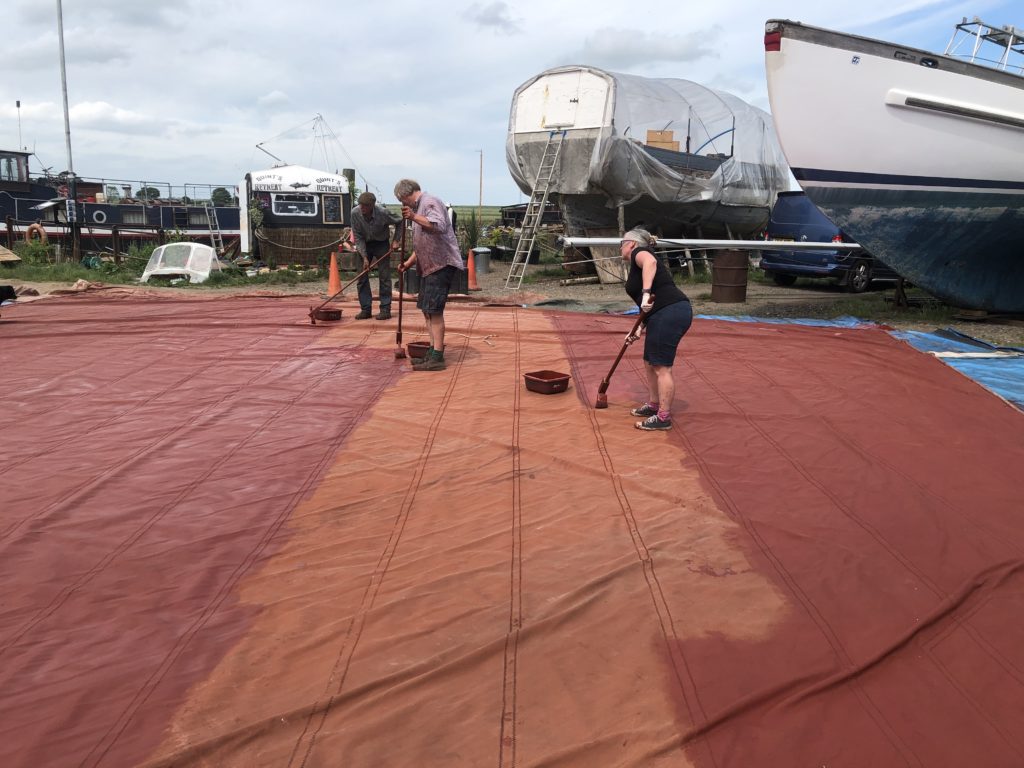
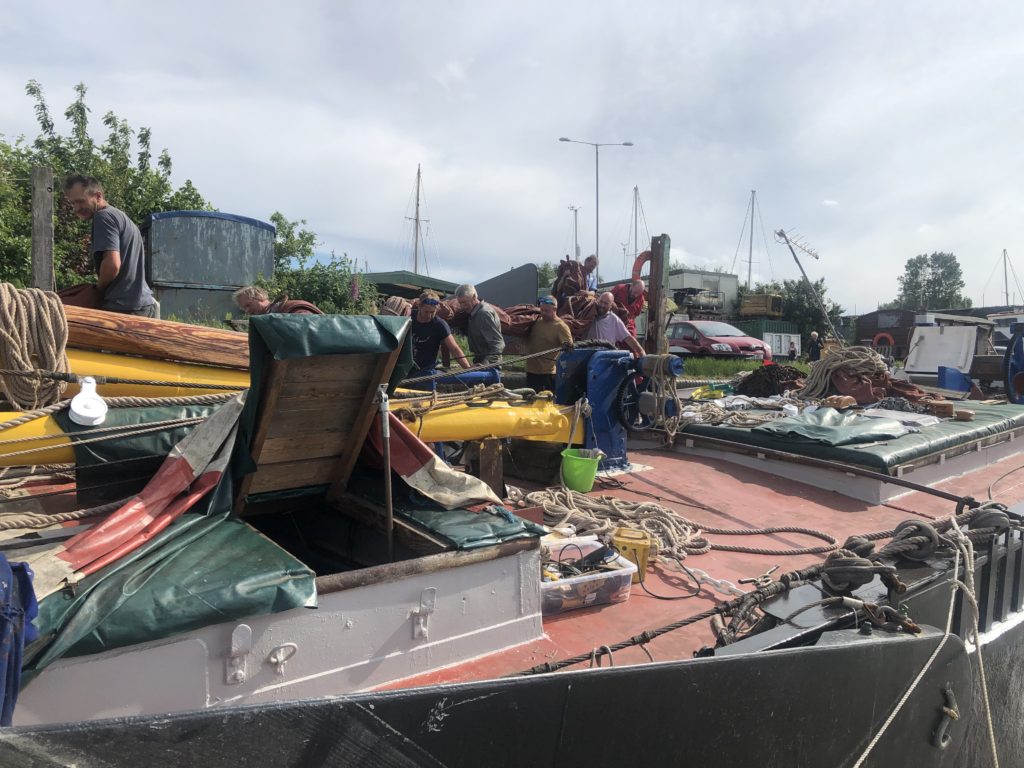
Of course, the waterside and yard around the Iron Wharf simply reeks ‘history’ for it is all around you.
The old brickworks dock is now used to berth a myriad of houseboats.

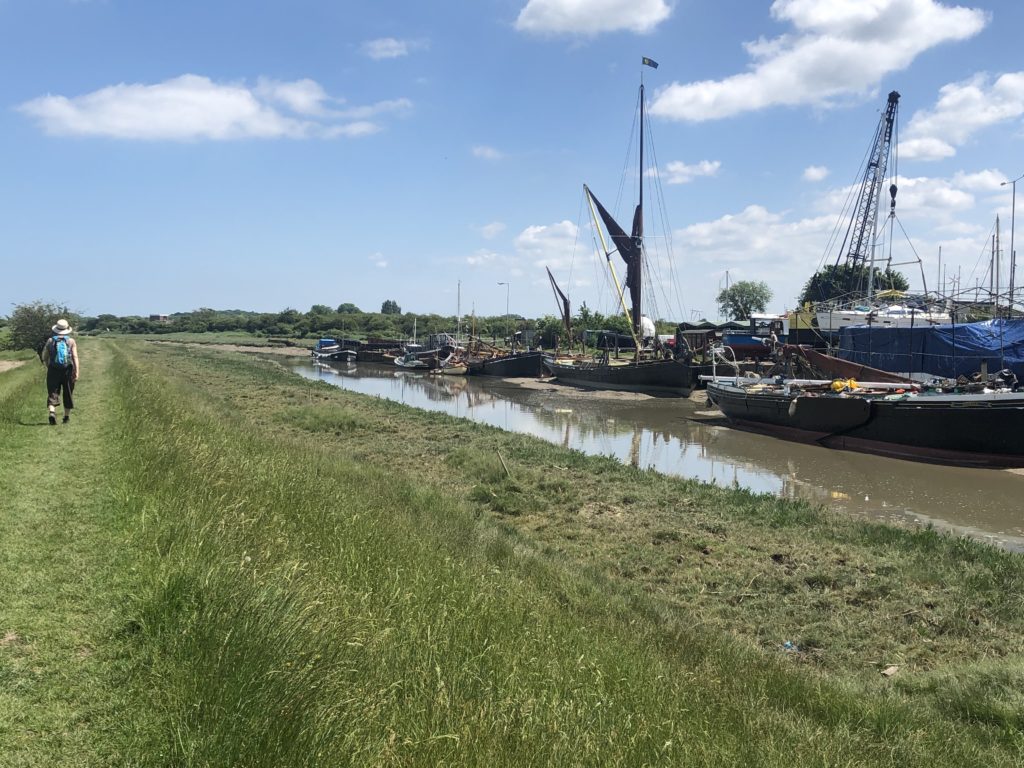
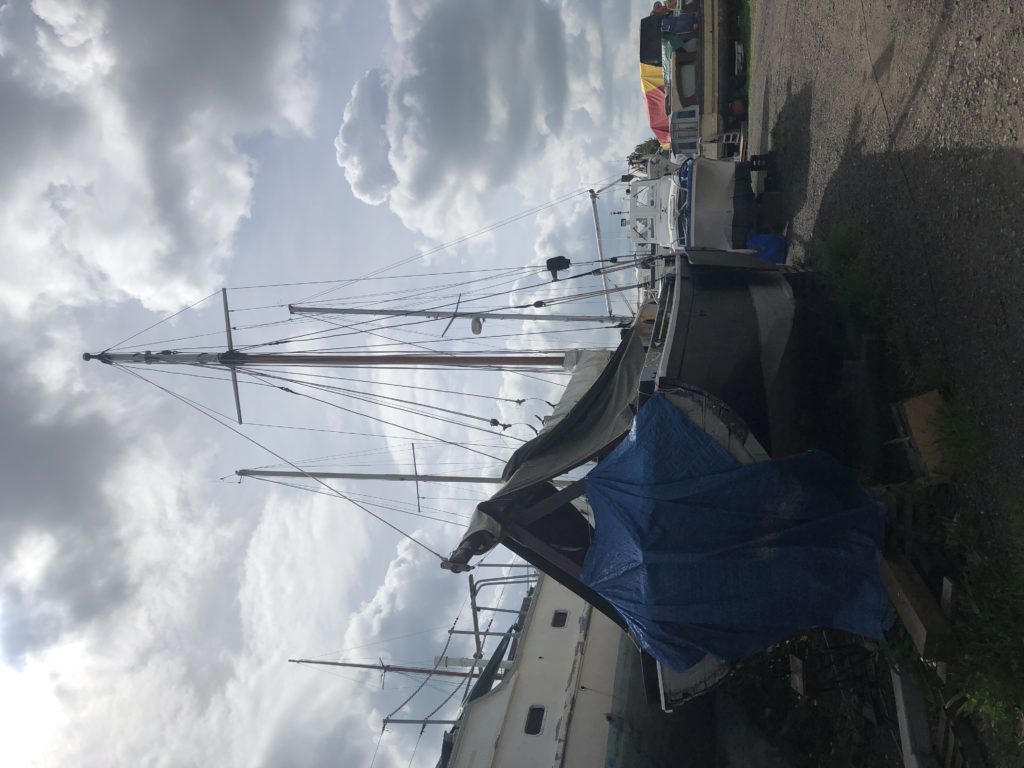
Yes, all seen is history, but it was something else that I was talking about. I found under a cover a boat that struck the ‘familiar’ within my soul. She was clearly a Yachting World Peoples Boat. She was obviously almost ready for the water with hull and topsides painted.
The first boat Christobel and I owned was a YWPB No. 4, built c1952 in Leigh-on-Sea. Her name, Blue Tail. We have never come across her since. I have seen a deeper keeled version, at Bradwell marina, I believe.
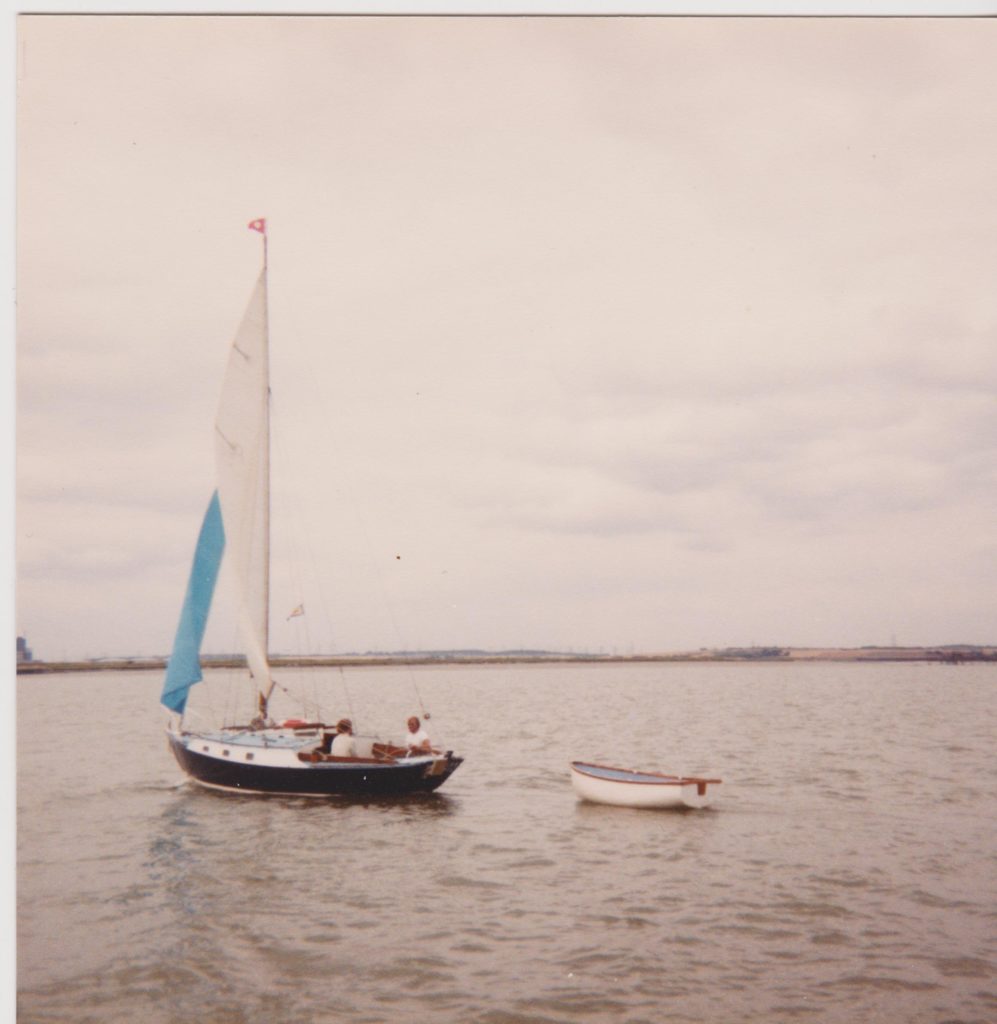
We sailed Bluetail for around three years before selling her and putting our deposit down on Whimbrel, our Finesse 24 owned since the signature from around August 1983. A short history of the class became chapter 1 in my book, Jottings of a Thames Estuary Ditch-crawler.
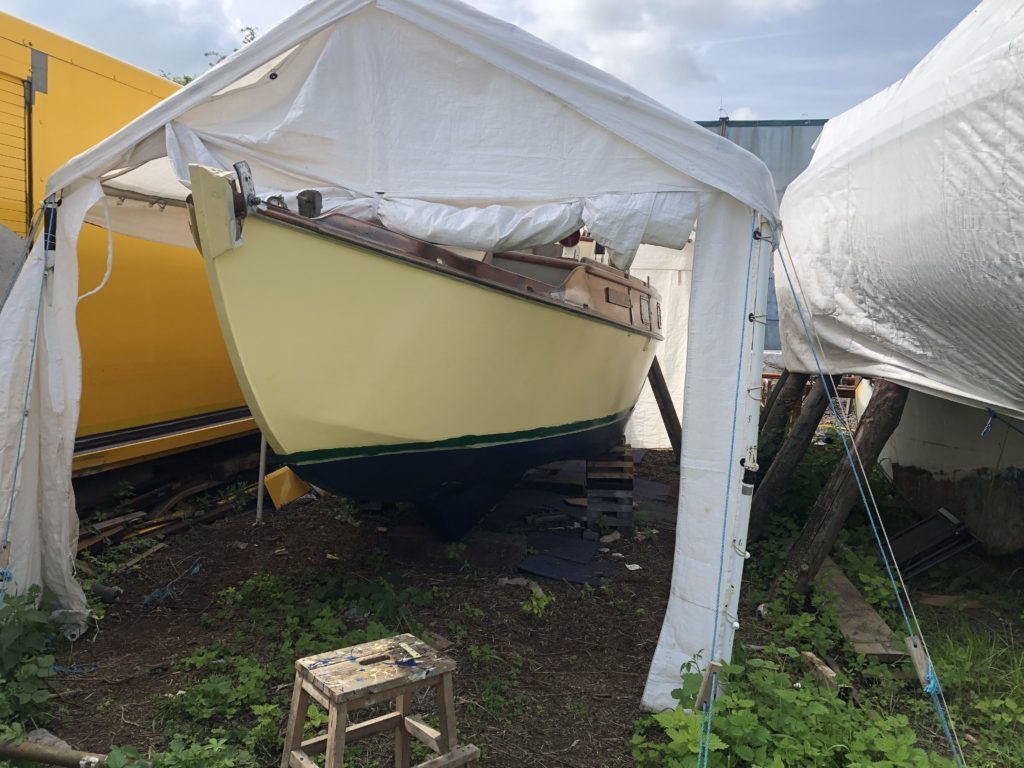
On our day of departure, I spotted activity round the boat and wandered over. Sitting on an old box was the owner busy painting a coat of metal paint on the removed pulpit.
We got nattering whilst he continued with his work…
He was ‘gobsmacked’ that someone had wandered past and actually recognised his boats pedigree. ‘We had one…’ I said, adding, ‘She was number four…’
The Venture is believed to have been built in 1956, and has faired well.
What was more startling was that the owner in response to a remark I made said he’d recently retired from his post as head of the Canterbury Archaeological Trust and had worked for years around Dover. Bells began to ring.
I don’t know what made me say or think about what I said, but I blurted out, ‘The Dover Boat…’ adding, ‘we went to see her in Dover’s Museum last autumn…’
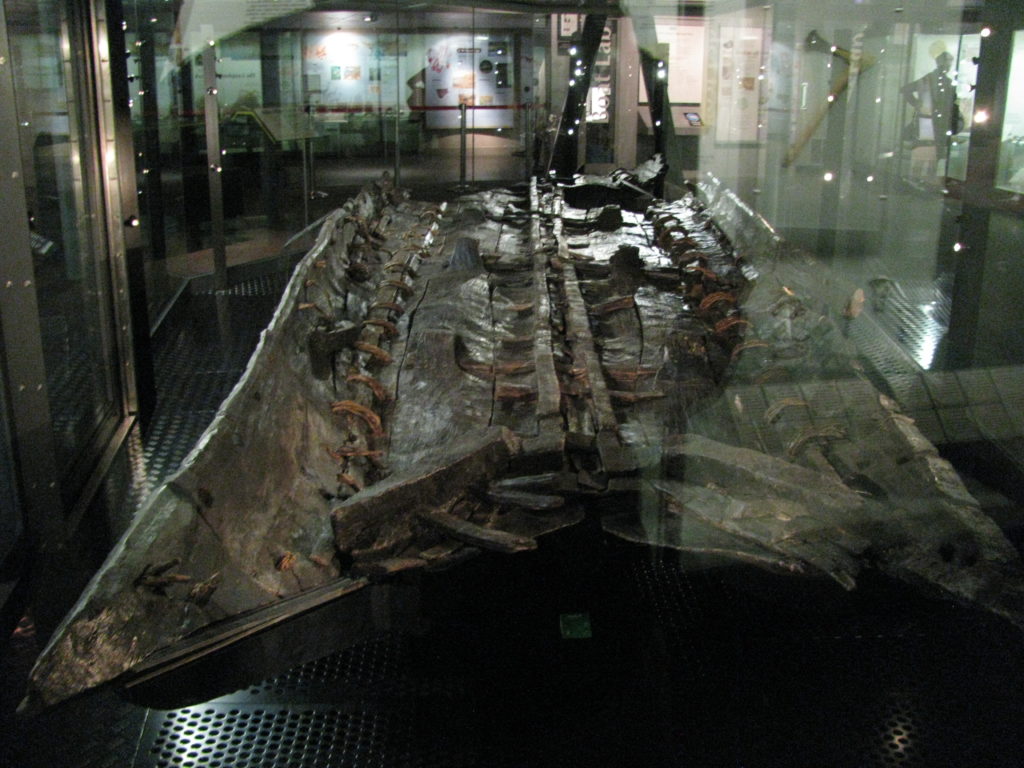
he looked at me and said, ‘Yes. I found her…’
WOW! I was talking to the famous Dr Paul Bennett.
Well it was with his No. 2. He explained that when the A20 was being rebuilt through Dover, the contractors had to big a sump inside a coffer dam which was being used for archaeological work around an old wharf front eventually found to date to Roman times.
The digging stopped for tea and the pair got down in the hole to have a poke about.
Bingo, the end of a boat was found, cut through. Its level dictated it was older than Roman (late Iron Age), but how old. Clues soon said Bronze Age…
A section was retrieved.
The museum, situated in the middle of Dover, has the part rescued from beneath the road workings as well as a scaled down replica.
We were both mesmerised by her, me, the more so and I took photographs from various angles to try and capture her.
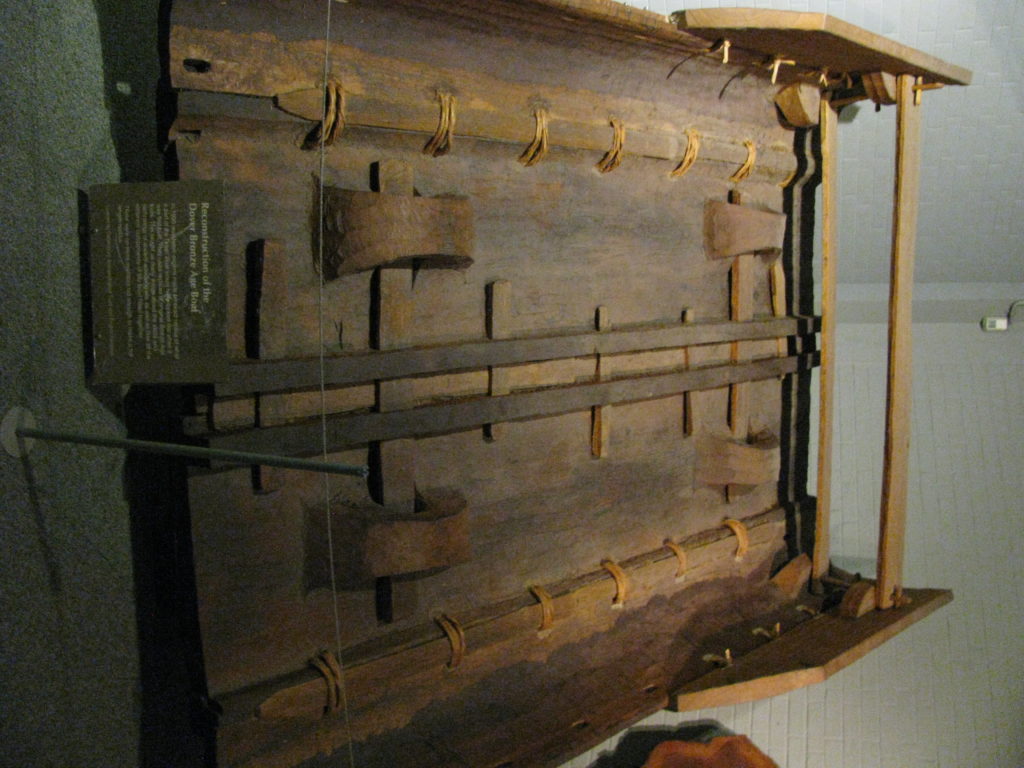

We briefly talked about Must Farm near Peterborough – a place we are planning to visit in the autumn when on a return to ‘our’ mill in Boston for a cottage holiday.
I said that one of the things that struck me was the ‘similarity’ to so many vessels that followed – the Loire barges and the spritsail barge. Yes, the constructional details have changed, but the shape is familiar. The sritsail barge developed from the Chapman Chalk barge of the 1750s onwards an essentially open vessel with the traditional lighter sloping ends.
Well, we ended up nattering for around half an hour and the tide was coming in!
I had to excuse myself…
So, it just goes to show how things pan out when a little bit of networking is carried out, whilst poking about…
Dr Paul Bennett later headed a project to build a half size replica. It was eventually achieved with Belgian and French funding/university assistance due to a gross lack of UK interest!
The boat is kept in Dover Harbour and is taken out for regular paddles…
For interest, see:
https://en.wikipedia.org/wiki/Dover_Bronze_Age_Boat
https://www.canterburytrust.co.uk/dover-bronze-age-boat
The encounter was one of the highlights of our trip, apart from the sailing of course!
